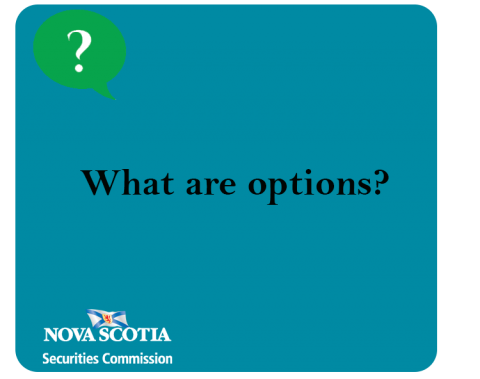Submitted by nsscadmin on

Options are another category of derivative. They are very similar to futures contracts, but with one very important difference. The name is a pretty big hint.
An option is a contract sold by one party, called the writer, to another party, called the holder. Under the contract the holder has the right, but not an obligation to buy or sell a security or other financial asset at a set price during a certain period of time, or on an exact date. The key here is the lack of obligation to buy or sell on the holder, that is giving them the right to exercise their option. To buy an option the investor must pay a cost known as a premium.
Options are classified as Call Options or Put Options.
A Call Option allows the holder to buy at a certain price, while a Put Option allows the holder to sell at a certain price. Both are used by investors to manage risk or speculate and hoping to lock in or make a profit or insure against a loss. Here’s how each works if an investor was using their option to buy or sell a stock.
Since a call option gives the investor the right to buy at a certain price they are hoping for the stock’s value to go up. Let’s say the call option gives the investor the right to purchase the stock for $10 per share in the next two months. At the end of two months the stock price has risen 50 per cent and is now $15 per share. Since they have the option to purchase it at the lower price of $10 per share they can make the purchase and then sell it at its current value of $15 per share and make money less the premium to purchase the option.
What if instead of rising 50 per cent, the stock drops 50 per cent and is now priced at $5 per share? The investor would not exercise their right to purchase stock at $10 because they would be losing money. The investor has not come out unscathed though. If they decide not to follow through on their right to purchase the stock the premium is still paid.
When an investor buys a put option they are given the option to sell a security of asset at a certain price, so they are hoping for the value of the stock to go down. For example, if they have the right to sell their stock at $10 and the price drops to $5 they will gain less the premium by selling their stock at higher than its current value. Again, if the stock does not drop in value and instead goes up they don’t have to sell at the lower value, but they lose the premium they paid for the option.
